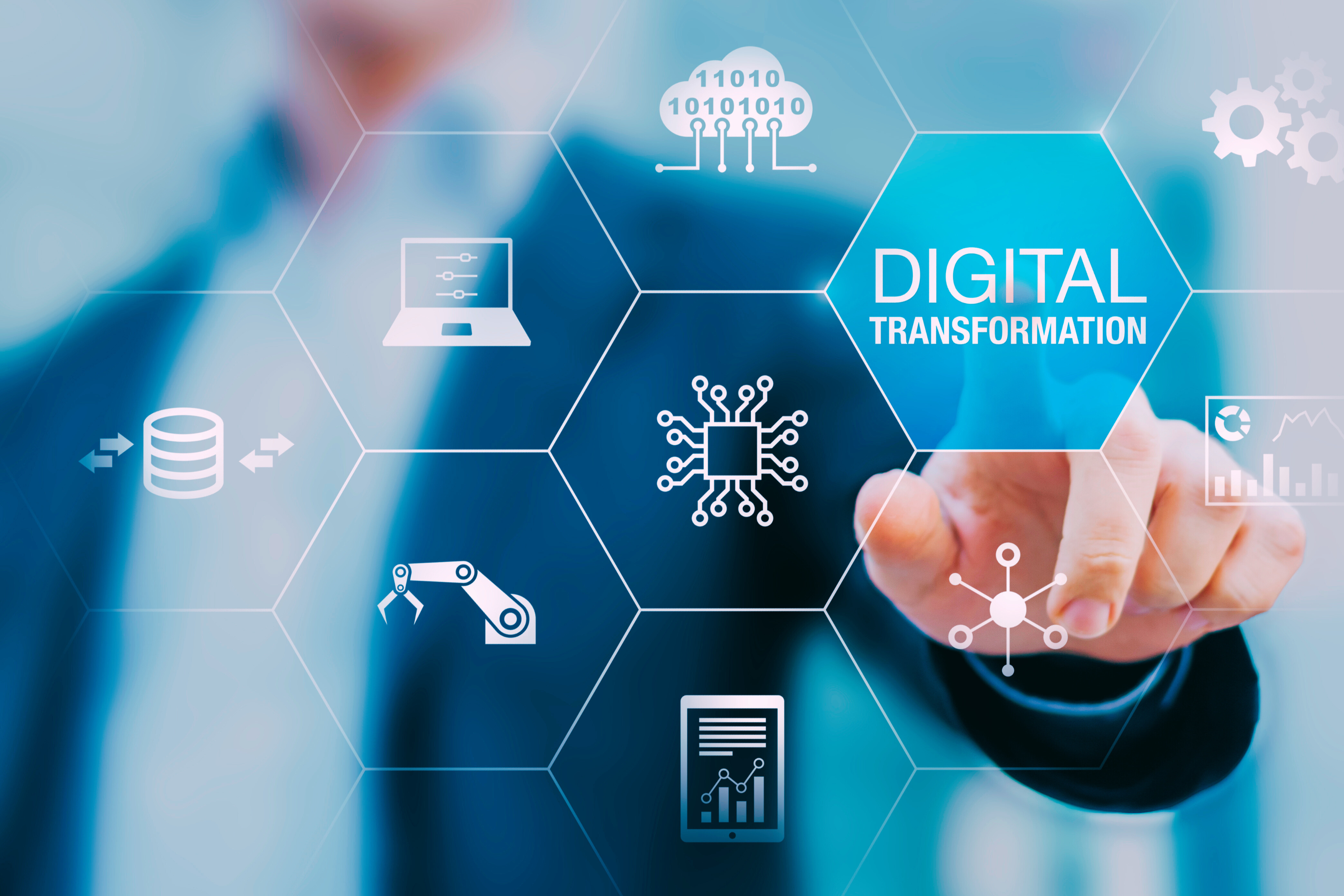Digital Transformation vs. Digitalization: What’s the Difference?

Digital transformation and digitalization are often used interchangeably, even though they are quite different. And while they are similar and share the same playing field (as we’ll discuss), one is a piece of the puzzle, while the other is the complete picture. 🧩
What’s become clear over the last few years is that over 90% of organizations have some form of digital initiative—be it digitalization or full-blown digital transformation. It’s no accident companies are pushing for digital change. The associated benefits they bring to the table are undeniable.
But to understand the fundamental differences (and similarities) between the two, we’re going to comb through each to see what your organization should be prioritizing in this digital age. By the end of the blog, you’ll understand:
- What digital transformation & digitalization are
- Practical use cases of digitalization
- Core benefits of digital transformation
- What your organization should be prioritizing for greater impact
With the confusion surrounding the two industry buzzwords, which one should your organization be leaning into? Let’s find out. ⬇️
What is Digitalization?
Digitalization—in the context of technology and business—is the process of converting analog information (or traditional manual processes) into digital formats.
This enables the use of the latest digital technologies and tools. It involves the adoption and integration of digital technologies to streamline existing processes, often leading to increased efficiency, accuracy, and accessibility of information. Let’s take a closer look at how you can achieve these results through specific use cases.
Digitalization Use cases
Digitalization offers various use cases across many industries that will enable your organization to:
- Digitize documents and records for efficient information management
- Implement digital communication channels for real-time collaboration and faster decision making
- Transform customer experiences through online platforms and mobile apps for personalized interactions
- Enable remote working capabilities
- Utilize data analysis tools to gain insights for future decisions
Essentially, digitalization focuses on leveraging technology to transform analog or physical elements into digital equivalents. This process lays the crucial foundation for broader digital transformation initiatives. ✅
Understanding Digital Transformation
To break it down, digital transformation is the comprehensive and strategic integration of digital technologies, processes, and capabilities into all aspects of an organization's operations, culture, and customer experiences.
It represents a fundamental shift in how businesses leverage technology to drive significant and disruptive changes throughout their entire ecosystem. Digital transformation goes beyond the simple digitalization of specific tasks (as mentioned in the previous section). Instead, it aims to fundamentally alter business models, processes, and customer interactions to adapt to the demands of a rapidly changing digital landscape. 😎
For example, a traditional retail store undergoing digital transformation might transition to an e-commerce platform, allowing its customers to shop online. This shift not only expands the customer base but also provides an easier shopping experience for those who can’t make it in-store.
At its base level, digital transformation involves reimagining traditional practices, embracing innovation, and leveraging innovative technologies, such as Direktiv’s serverless event-driven orchestration platform.
The Core Benefits of Digital Transformation
If done correctly, digital transformation can offer several key benefits to your organization, like:
- Enhanced Agility: You can quickly adapt to market changes, customer demands, and emerging technologies, allowing for increased agility and overall responsiveness.
- Increased Operational Efficiency: Through orchestrated workflows, streamlined automated processes, and data-driven decision-making, you can optimize operations, reduce costs, and improve overall efficiency.
- Innovation & Competitive Advantage: Digital transformation fosters a culture of innovation, empowering your organization to explore new business models, products, and services—leading to a competitive edge in the market.
- Data-Driven Insights: With the power of data analytics and business intelligence tools, your organization can gain valuable insights, make informed decisions, and drive strategic initiatives.
- Scalability & Flexibility: With a platform like Direktiv, your organization can scale its operations efficiently, adapt to changing business needs, and explore new growth opportunities with minimal constraints.
- Risk Mitigation & Security: Digital transformation incorporates robust cybersecurity measures, data privacy protocols, and risk management strategies to protect digital assets and ensure regulatory compliance.
Overall, successful transformation can enable your organization to become more agile, customer-centric, and competitive. All while unlocking new revenue streams, improving operational efficiencies, and delivering enhanced value.
➡️ To learn 5 things that can screw up your digital transformation, check out this article.
The Relationship Between Digitalization and Digital Transformation
Digitalization and digital transformation are interconnected concepts that work to drive change and innovation. While they share similarities, it's important to understand their distinct roles and how digitalization complements the transformation process. ⬇️
At its core, digitalization serves as the foundation of digital transformation. As you’ve seen in this blog, it focuses on the conversion of analog processes and information into digital formats. On the other hand, digital transformation involves a fundamental rethinking and redesigning of business models, processes, and customer experiences to drive effective organizational change.
Digitalization helps digital transformation by providing the necessary infrastructure and capabilities to support innovative practices, data-driven decision-making, and the adoption of emerging technologies. In essence, digitalization is the initial step that sets the stage for digital transformation, acting as a catalyst for organizational growth, competitiveness, and resilience in the digital era.
(Source: Giphy)
The Importance of Digital Transformation
Embracing digital transformation is crucial to stay relevant, competitive, and future-proof your organization. One of the key reasons it’s important is its ability to drive innovation.
By adopting new technologies and rethinking outdated traditional business practices, your organization can unlock new opportunities, create disruptive business models, and explore untapped markets. Digital transformation strengthens organizational resilience by building agile, adaptable structures capable of navigating uncertainties and disruptions. 💪
With Direktiv’s event-driven serverless workflow engine, your organization can capitalize on serverless architecture to accelerate the transformation process. You’ll be able to build and scale workflows, modernize your legacy systems, implement event-driven automation, and much more.
Digital transformation is not just about surviving in the digital age—it's about thriving, innovating, and securing a sustainable future.
Final Thoughts
Understanding the differences (and similarities) between digital transformation and digitalization is crucial if you want to experience the incredible benefits of the full transformation process. To take on this journey, your organization needs the right tools and expertise. With Direktiv, our customers have experienced:
- 70% improvement in time to market
- 60% increase in developer productivity
- 18% - 31% decrease in infrastructure, integration, and development costs
Are you ready to kick off your digital transformation with us? Get started today by trying Direktiv for free.

.png)

